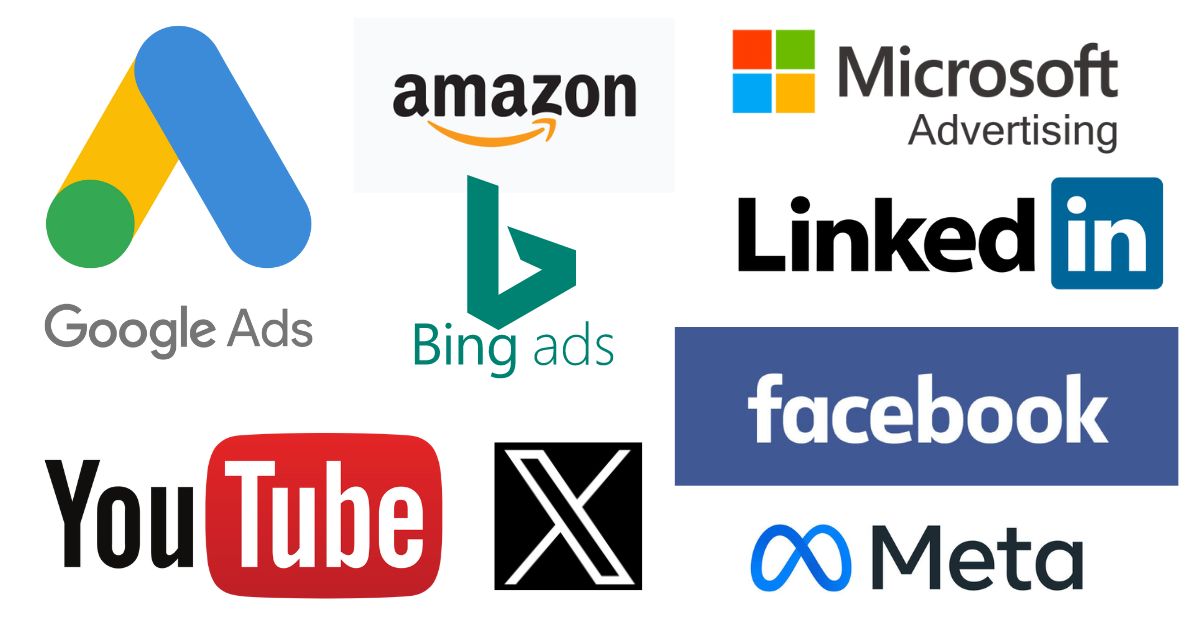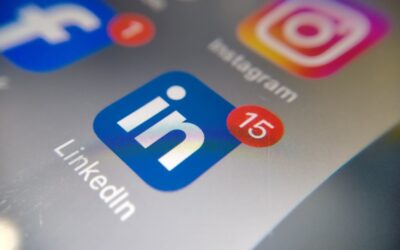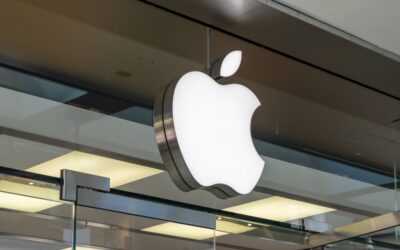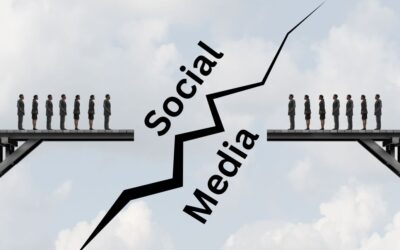In today’s fast-paced digital landscape, businesses have a wealth of opportunities to reach their target audiences through various advertising platforms. However, navigating this vast array of options can be overwhelming, especially when trying to determine which platforms will provide the best return on investment. From search engines to social media networks, and display networks to programmatic advertising, each platform offers unique features and benefits tailored to different marketing objectives.
In this blog, we will explore the top advertising platforms available today, highlighting their key strengths, capabilities, and how they can be leveraged to enhance your marketing strategy. Whether you’re a seasoned marketer or new to the world of digital advertising, this guide will provide valuable insights to help you make informed decisions and achieve your business goals.
What are Digital Advertising Platforms?
Digital advertising platforms are spaces that enable businesses to reach and engage with their target audiences across various digital media channels. These platforms range from search engines like Google Ads, which allow for targeted keyword-based advertising, to social media networks such as Facebook, Instagram, and LinkedIn, where ads can be finely tuned based on user demographics, interests, and behaviors. Display networks offer banner and video ad placements on a wide array of websites. Each platform offers unique features and analytics, providing businesses with powerful insights to refine their marketing strategies and maximize their advertising ROI.
The Top 7 Advertising Platforms
Choosing the right advertising platform is a critical decision that can significantly impact the success of your marketing efforts. Whether you’re aiming to boost brand awareness, drive website traffic, or generate leads, the list below will help you make an informed choice that maximizes your return on investment.
Here are the top 7 advertising platforms for 2024:
1. Google Ads
Google Ads is the leading digital advertising platform that empowers businesses to reach their target audiences through tailored ads displayed across Google’s vast network, including search results, YouTube, and partner websites. With its robust targeting capabilities, Google Ads allows advertisers to focus on specific keywords, demographics, locations, and interests, ensuring their messages reach the right people at the right time. Offering various ad formats such as text, display, video, and shopping ads, the platform provides flexibility to suit different marketing goals. Comprehensive analytics and reporting tools enable real-time monitoring and optimization of campaigns, making Google Ads an essential tool for maximizing online visibility and driving business growth.
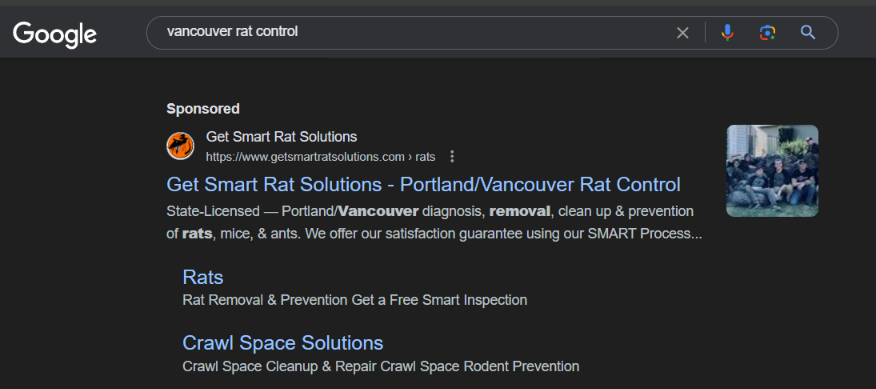
Google Ads’ current ad formats:
- Search Ads: Text-based ads that appear at the top or bottom of Google search results when users search for specific keywords related to your business.
- Display Ads: Visual ads, including images, videos, and rich media, displayed on websites and apps within the Google Display Network, reaching millions of users across the web.
- Video Ads: Engaging video content displayed on YouTube and across the Google Display Network, allowing businesses to reach audiences with compelling video messages.
- Shopping Ads: Product listings that appear at the top of Google search results when users search for specific products, showcasing images, prices, and other relevant details.
- App Ads: Promotional ads for mobile apps displayed on Google Search, Google Play, YouTube, and across the Google Display Network to drive app installs and engagement.
- Local Ads: Ads that promote physical store locations and services, displayed on Google Maps and in local search results to drive foot traffic and conversions.
Why should you use Google Ads?
- Reach: Google Sites Receive 276 Million Unique Monthly Visitors in the U.S. This makes it the most visited multi-platform web property in the U.S.
- Google Display Network (GDN): The GDN comprises of over 2 million websites, apps, and video content across the internet where Google Ads can be displayed. This network allows advertisers to reach users as they browse websites, watch videos on YouTube, use mobile apps, or engage with content on various platforms.
- Targeting: Google Ads offers sophisticated targeting options, allowing businesses to reach specific demographics, locations, interests, and even device types. This precision targeting ensures that ads are shown to the most relevant audience, maximizing the chances of conversions.
- Measurable Results: Google Ads provides detailed performance metrics and analytics, allowing businesses to track the effectiveness of their campaigns in real-time. From click-through rates to conversion tracking, businesses can gain valuable insights into the ROI of their advertising efforts and make data-driven decisions to optimize performance.
2. Facebook Ads
Facebook Ads are a dynamic and versatile advertising platform that empowers businesses to connect with their target audiences on the largest social media network. With over 279 million users in the United States, Facebook offers unparalleled reach and targeting capabilities, allowing advertisers to tailor their ads to specific demographics, interests, behaviors, and locations. Whether you’re aiming to increase brand awareness, drive website traffic, generate leads, or boost sales, Facebook Ads offers a range of ad formats. Additionally, advanced features such as custom audiences, lookalike audiences, and retargeting enable advertisers to reach users at various stages of the customer journey, from awareness to conversion. With detailed analytics and insights, businesses can track the performance of their campaigns in real-time, optimize their strategies, and maximize their return on investment. Facebook Ads is a powerful tool for businesses looking to engage with their target audiences effectively and drive results in the competitive digital landscape.
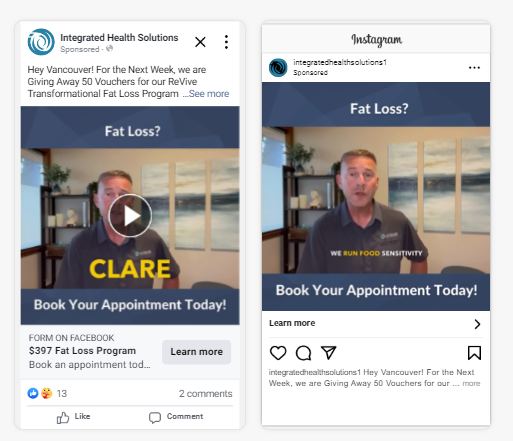
Facebook Ads’ current ad formats:
- Image Ads: These are simple and straightforward ads that consist of a single image. They can be effective for catching users’ attention and conveying a clear message.
- Video Ads: Video ads allow businesses to showcase their products, services, or brand story through engaging video content. They can be highly effective in capturing users’ attention and driving engagement.
- Carousel Ads: Carousel ads allow businesses to showcase multiple images or videos within a single ad unit. Users can swipe or scroll through the carousel to view different pieces of content, making this format ideal for highlighting multiple products or features.
- Slideshow Ads: Slideshow ads are lightweight video ads created from a series of static images. They offer a cost-effective way to create engaging video-like content without the need for video production.
- Collection Ads: Collection ads feature a primary image or video above a grid of product images. When users click on the ad, they are taken to an immersive, full-screen experience where they can browse and purchase products directly from within Facebook.
- Instant Experience Ads (formerly Canvas Ads): Instant Experience ads are mobile-optimized, interactive ad experiences that allow businesses to create immersive, full-screen experiences for users. They can include a combination of images, videos, carousels, and call-to-action buttons.
- Lead Ads: Lead ads allow businesses to collect leads directly within the Facebook platform without users having to leave the site or app. These ads feature a lead form that users can fill out with their contact information or other details.
Why should you use Facebook Ads?
- Reach: Over 279 million users in the United States which accounts for 81% of the entire population.
- Cost-Effective: Facebook ads can be cost-effective compared to traditional advertising channels, allowing businesses to reach a large audience without breaking the bank. Additionally, Facebook offers flexible budgeting options, allowing businesses to set their own budgets and bidding strategies.
- Targeting: Facebook’s advanced targeting options enable businesses to reach specific demographics, interests, behaviors, and locations, ensuring that ads are shown to the most relevant audience.
- Measurable Results: Facebook provides detailed analytics and reporting tools that allow businesses to track the performance of their ads in real-time. This enables businesses to measure the effectiveness of their campaigns and make data-driven decisions to optimize performance.
3. Microsoft Advertising (Bing)
Microsoft Advertising (formerly known as Bing Ads) is a digital advertising platform that enables businesses to reach a diverse audience across Bing, Yahoo, AOL, and partner sites, offering reach and visibility. Bing Ads are a great way to complement Google Ads by tapping into a different audience segment—often with less competition and potentially lower costs. Microsoft Advertising provides advanced targeting options, allowing advertisers to tailor their campaigns based on demographics, locations, devices, and even LinkedIn profile data. Additionally, comprehensive analytics and reporting tools help advertisers optimize their campaigns for better performance and return on investment.
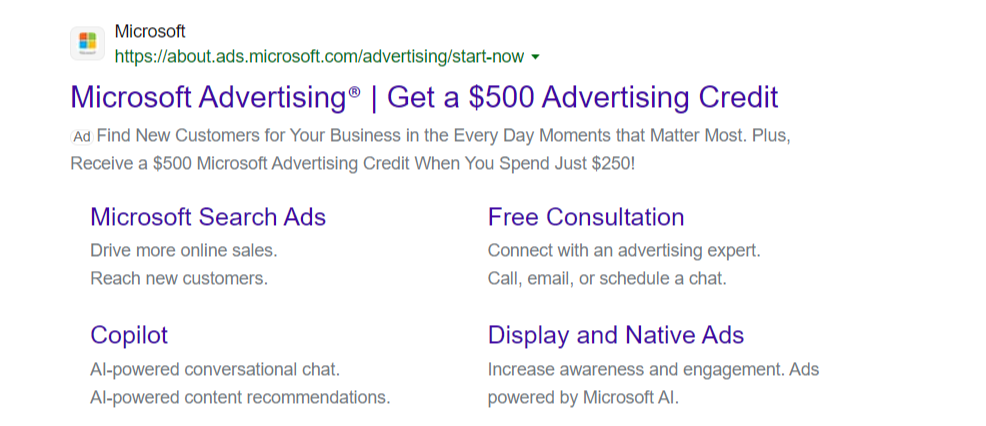
Microsoft Ads’ current ad formats:
- Text Ads: These are the most common ad format, consisting of a headline, description, and a link to your website. Text ads appear on Bing, Yahoo, AOL, and partner sites, typically at the top or bottom of search results.
- Product Ads: Also known as Shopping Ads, these display a product image, title, price, and merchant name. They appear on the Bing Shopping platform and Bing search results, helping drive traffic directly to product pages.
- Multimedia Ads: These visually rich ads combine images, headlines, and text in a compelling format designed to capture attention and drive engagement. They can appear on the search results page and other placements within the Microsoft Search Network.
- App Install Ads: Designed to promote mobile apps, these ads appear on the Bing search results page and the Microsoft Audience Network. They include a direct link to download the app, helping increase app installs.
- Local Inventory Ads: These ads showcase products available at nearby stores, combining online and offline retail experiences. They appear in Bing Shopping results and local search queries, helping drive foot traffic to physical stores.
- Microsoft Audience Ads: Native ads that blend seamlessly into the user experience on platforms like MSN, Microsoft Edge, and Outlook.com. These ads leverage Microsoft’s audience intelligence to reach highly relevant users.
Why should you use Microsoft Ads?
- Reach: Microsoft Advertising allows businesses to tap into a significant audience through the Microsoft Search Network, which includes Bing, Yahoo, AOL, DuckDuckGo, and other partner sites. This network reaches millions of users globally, providing a broad platform for advertising campaigns.
- Less Competition: Compared to Google Ads, Microsoft Advertising often has less competition, which can lead to lower cost-per-click (CPC) rates. This can make advertising more cost-effective, especially for small to medium-sized businesses with limited budgets.
- Advanced Targeting Options: Microsoft Advertising offers robust targeting capabilities, including demographic targeting, location targeting, device targeting, and even LinkedIn profile targeting. This allows businesses to reach highly specific and relevant audiences.
- Integration with LinkedIn: Microsoft Advertising’s unique integration with LinkedIn data allows advertisers to target users based on their LinkedIn profiles, including job title, company, industry, and seniority. This is particularly valuable for B2B marketers looking to reach professionals in specific fields.
- Diverse Ad Formats: Microsoft Advertising supports a variety of ad formats, including text ads, product ads, multimedia ads, and more. This variety allows businesses to choose the most effective formats for their marketing goals and audience preferences.
- Detailed Analytics and Reporting: Microsoft Advertising provides comprehensive analytics and reporting tools that help businesses track the performance of their campaigns. These insights enable advertisers to optimize their strategies and improve their return on investment (ROI).
4. YouTube Ads
YouTube Ads offer businesses a powerful platform to reach and engage with a vast audience through dynamic video content. With over 2 billion logged-in monthly users, YouTube provides unparalleled reach and visibility. YouTube Ads can be targeted based on user demographics, interests, search behavior, and viewing habits, ensuring that your message reaches the most relevant audience. Additionally, YouTube’s robust analytics and reporting tools allow businesses to track ad performance in real-time, optimize campaigns, and maximize return on investment. Leveraging YouTube Ads can enhance brand awareness, drive website traffic, and boost conversions, making it an essential component of any comprehensive digital marketing strategy.
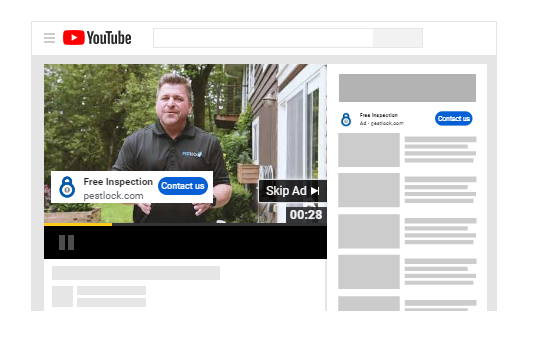
YouTube Ads’ current ad formats:
- Skippable In-Stream Ads: These ads play before, during, or after other videos and can be skipped after 5 seconds. They are ideal for driving awareness and can be charged on a cost-per-view (CPV) basis when a viewer watches 30 seconds or engages with the ad.
- Non-Skippable In-Stream Ads: These ads must be watched before a viewer can watch their selected video. They are typically 15-20 seconds long and are best for delivering a concise, impactful message. These ads are charged on a cost-per-impression (CPM) basis.
- Bumper Ads: Short, non-skippable ads lasting up to 6 seconds that play before, during, or after another video. They are designed to increase brand awareness with a brief, memorable message and are also charged on a CPM basis.
- Video Discovery Ads: These ads appear in YouTube search results, alongside related videos, or on the YouTube homepage. They consist of a thumbnail image from your video with a short text description and are designed to encourage viewers to click and watch your video. Charges are incurred when viewers click on the ad to watch the video.
- Overlay Ads: Semi-transparent overlay ads that appear on the lower 20% portion of a video. These can be text or image-based and are available only on the desktop. They are charged on a cost-per-click (CPC) basis.
- Sponsored Cards: Small, rectangular notifications that appear within videos, promoting related products or other content. Viewers see a teaser for the card, and can click to view the full card. These are charged on a CPC basis.
- Outstream Ads: Video ads that play on partner websites and apps outside of YouTube. They begin playing with the sound off, and viewers can tap to unmute. Outstream ads are designed to expand your reach beyond YouTube.
Why should you use YouTube Ads?
- Vast Reach: With over 239 million YouTube viewers in the United States, YouTube offers unparalleled reach, allowing businesses to connect with a diverse audience.
- Engagement: YouTube is a highly engaging platform where users spend a significant amount of time watching videos. This presents businesses with an opportunity to capture users’ attention and drive engagement with their ads.
- Video Content: YouTube is the world’s largest video-sharing platform, making it an ideal platform for businesses to showcase their products, services, and brand story through engaging video content.
- Targeting Capabilities: YouTube offers advanced targeting options, allowing businesses to reach specific demographics, interests, search behaviors, and even audiences based on their interactions with YouTube videos and channels.
- Measurable Results: YouTube provides detailed analytics and reporting tools that help businesses track the performance of their ads in real-time. These insights enable advertisers to optimize their strategies and improve their return on investment (ROI).
- Brand Awareness: YouTube ads can help businesses increase brand awareness and visibility, even among users who may not be actively searching for their products or services. Seeing ads while watching videos can help keep businesses top of mind for potential customers.
5. LinkedIn Ads
LinkedIn Ads offers a unique and powerful platform for businesses looking to connect with professionals and decision-makers in their industry. With over 200 million members in the United States, LinkedIn is the largest professional networking platform, making it an ideal place to reach a highly targeted audience. LinkedIn Ads provides sophisticated targeting options, allowing businesses to target users based on criteria such as job title, company, industry, skills, and more. This enables advertisers to reach professionals who are actively engaged and interested in relevant products or services. Whether it’s increasing brand awareness, generating leads, or driving website traffic, LinkedIn Ads can be a valuable addition to any B2B marketing strategy, helping businesses reach the right audience and achieve their objectives effectively.
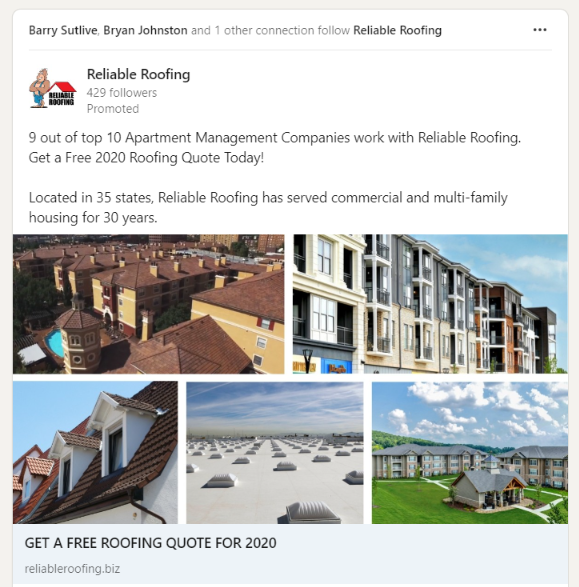
LinkedIn Ads’ current ad formats:
- Sponsored Content: These ads appear directly in the LinkedIn feed alongside organic content. They can include text, images, videos, or carousel formats, making them highly engaging for users.
- Sponsored Messaging: Message Ads allow businesses to send personalized messages directly to their target audience’s LinkedIn Messaging. These ads stand out in an uncluttered environment, delivering a targeted message featuring a single call-to-action (CTA) button. You can direct prospects to a Lead Gen Form for easy lead collection, and optimize results with reporting that shows who is taking action on your ad.
- Text Ads: Text ads are simple, text-based ads that appear on the right-hand side of the LinkedIn feed or at the top of the LinkedIn homepage. They are cost-effective and can be targeted based on criteria such as job title, company, industry, and more.
- Video Ads: Video ads allow businesses to share engaging video content with their target audience. These ads can be placed in the LinkedIn feed or on the LinkedIn homepage, helping businesses capture users’ attention and drive engagement.
Why should you use Linkedin Ads?
- Targeted Audience: LinkedIn has over 200 million members in the United States, making it an ideal platform to reach a highly targeted audience. With sophisticated targeting options based on job title, company, industry, skills, and more, businesses can ensure their ads are seen by the right people.
- B2B Focus: LinkedIn is primarily used for professional networking and business-related activities, making it particularly effective for B2B marketing. Businesses can reach decision-makers, influencers, and professionals who are actively engaged in their industry.
- Job Recruitment: LinkedIn is a popular platform for job seekers and recruiters alike. Businesses can use LinkedIn Ads to promote job openings and attract qualified candidates, leveraging the platform’s extensive network of professionals.
- Measurable Results: LinkedIn provides detailed analytics and reporting tools that allow businesses to track the performance of their ads in real-time. This enables advertisers to measure the effectiveness of their campaigns and make data-driven decisions to optimize performance.
6. Amazon Ads
Amazon Ads offers advertisers a powerful platform to reach millions of shoppers on the world’s largest e-commerce marketplace. With over 300 million active customer accounts and billions of product searches every month, Amazon provides unparalleled access to a high-intent audience ready to purchase. Amazon Ads allows businesses to promote their products through various ad formats, including Sponsored Products, Sponsored Brands, Sponsored Display, and Amazon DSP (Demand-Side Platform). These ads appear prominently on search results pages, product detail pages, and other key placements throughout the Amazon platform, helping businesses increase visibility and drive sales.
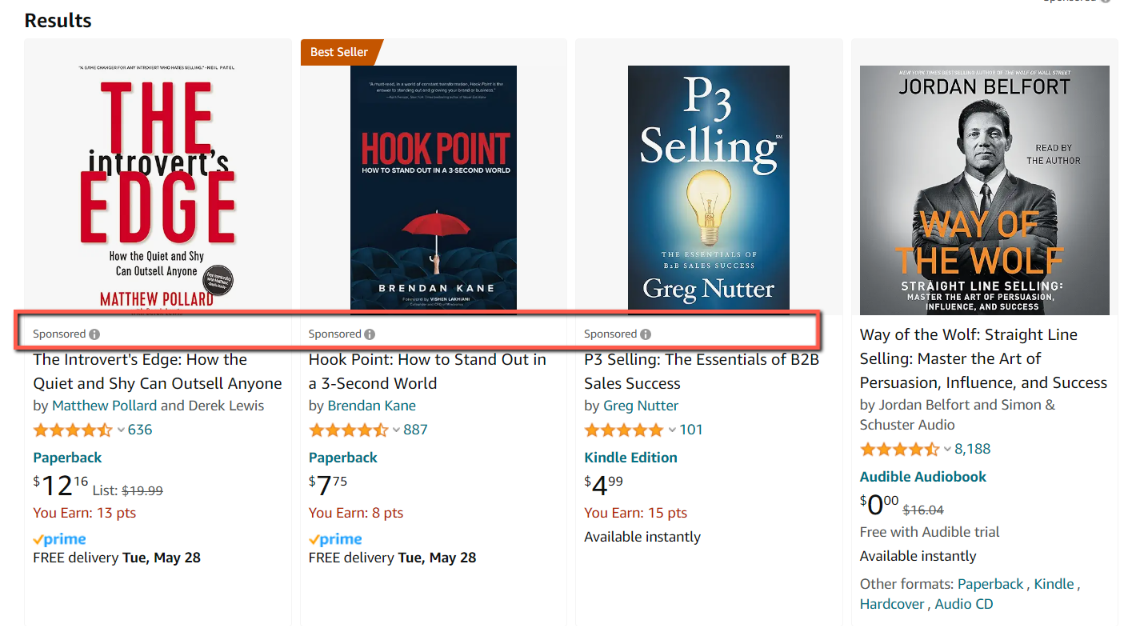
Amazon Ads’ current ad formats:
- Sponsored Products: Sponsored Products are keyword-targeted ads that appear within search results and on product detail pages. They feature individual products and are designed to drive traffic and sales directly to the advertised product’s page.
- Sponsored Brands (formerly Headline Search Ads): Sponsored Brands ads feature a custom headline, logo, and multiple products. They appear at the top of search results and help increase brand visibility and consideration.
- Sponsored Display: Sponsored Display ads allow businesses to retarget customers who have previously visited their product detail pages, competitor pages, or relevant category pages. These ads appear both on and off Amazon, helping businesses reach customers wherever they are in their shopping journey.
- Amazon DSP (Demand-Side Platform): Amazon DSP offers programmatic advertising solutions that allow businesses to reach and engage audiences both on and off Amazon. It provides access to a wide range of ad formats, targeting options, and advanced analytics to help businesses reach their marketing goals.
- Display Ads: Amazon Display Ads include banner and rich media ads that appear on various parts of the Amazon website and mobile app, including homepages, product detail pages, and search results pages.
Why should you use Amazon Ads?
- Massive Audience: Amazon is the largest e-commerce platform globally, with over 300 million customers browsing and purchasing products every day. Advertising on Amazon allows businesses to tap into this vast audience of high-intent shoppers.
- Purchase Intent: Amazon’s users are often in a buying mindset, actively searching for products to purchase. By advertising on Amazon, businesses can reach customers who are already interested in making a purchase, increasing the likelihood of conversion.
- Targeted Advertising: Amazon offers sophisticated targeting options based on customer search queries, interests, shopping behavior, and demographics. This allows businesses to show their ads to the most relevant audience, ensuring maximum impact and ROI.
- Performance Tracking: Amazon provides detailed analytics and reporting tools that allow businesses to track the performance of their ads in real-time. This enables advertisers to measure the effectiveness of their campaigns and make data-driven decisions to optimize performance.
- Drive Sales: Ultimately, the goal of advertising on Amazon is to drive sales and increase revenue. Whether it’s launching a new product, promoting seasonal deals, or targeting specific customer segments, Amazon Ads can help businesses achieve their sales targets and grow their e-commerce business.
7. X Ads (Twitter)
With over 450 million monthly active users, X (formerly known as Twitter) provides a unique opportunity to connect with customers in real-time as they discuss trending topics and share content. X Ads offer a variety of formats, including Promoted Tweets, Promoted Accounts, Promoted Trends, and Video Ads, each designed to help businesses achieve their marketing goals, whether it’s increasing brand awareness, driving website traffic, or boosting conversions. Utilizing X Ads can help businesses amplify their message, engage with a highly active user base, and drive meaningful results in the fast-paced world of social media.
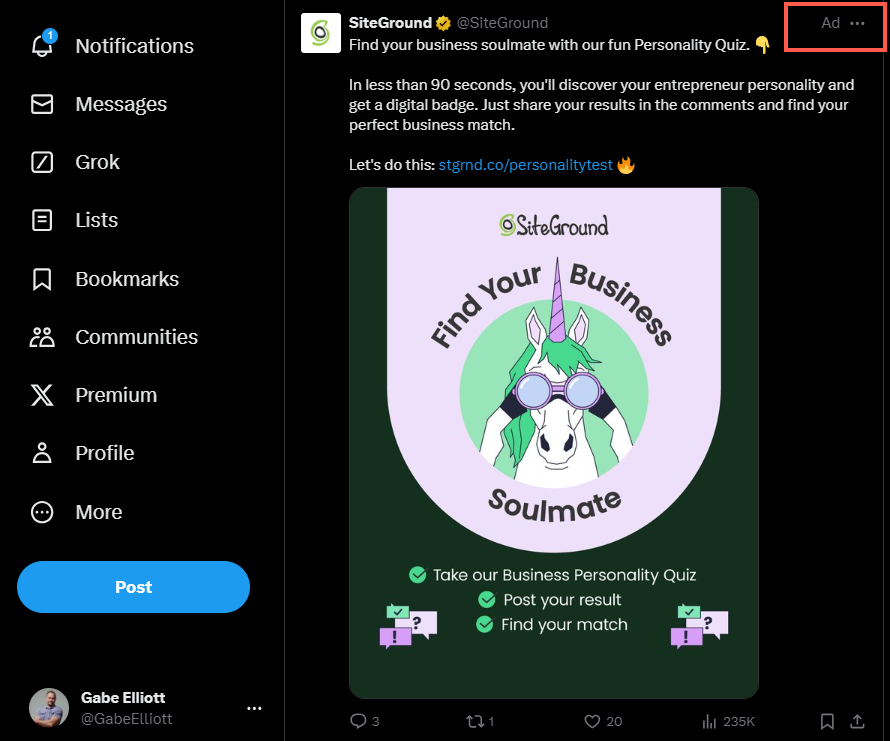
Special shout out to Siteground, which, in my opinion, is one of the best-shared hosting providers due to their fast load times, free SSL, user-friendly control panel, and great customer support.
X Ads’ current ad formats:
- Promoted Tweets: These are standard tweets that businesses pay to promote to a wider audience. Promoted Tweets appear in users’ timelines, search results, and profiles, looking similar to regular tweets but labeled as “Promoted.”
- Promoted Accounts: This format helps businesses grow their follower base by promoting their account to users who might be interested in their content. Promoted Accounts appear in targeted users’ timelines, the “Who to Follow” section, and search results.
- Promoted Trends: Promoted Trends allow businesses to promote a specific hashtag at the top of the trending topics list for a day. This format is ideal for driving large-scale awareness and engagement around events, product launches, or campaigns.
- Promoted Moments: These ads allow businesses to create and share a collection of tweets about a specific event or topic, giving users a narrative experience. Promoted Moments can include a mix of photos, videos, GIFs, and Vines.
- Video Ads: Businesses can promote video content on X to drive higher engagement. Video Ads can be used as standalone promoted tweets or integrated into other ad formats like Promoted Trends and Promoted Moments.
- Twitter Amplify: This format allows businesses to align their ads with premium video content from major publishers and broadcasters. It helps brands reach audiences watching high-quality video content on the platform.
- Twitter Takeover: This premium ad format includes First View and Trend Takeover, ensuring prominent placement of ads in highly visible areas, such as the top of the timeline or trending topics list, driving massive reach and impact.
- Live Ads: Businesses can promote live video streams to engage audiences in real-time, ideal for events, product launches, and exclusive announcements.
Why should you use X Ads?
- Real-Time Engagement: X is known for its real-time nature, making it an ideal platform for businesses to engage with users as events unfold. This allows businesses to join conversations, leverage trending topics, and respond to current events quickly, which can enhance relevance and visibility.
- Reach: While not as large as Google, Facebook, or LinkedIn, X still has over 106 million users in the United States for businesses to target.
- Targeted Advertising: X Ads offer advanced targeting options, including demographics, interests, behaviors, keywords, and follower look-alikes. This ensures that ads are shown to the most relevant audience, increasing the likelihood of engagement and conversion.
- Enhanced Engagement: The interactive nature of X encourages user engagement through retweets, likes, comments, and shares. This can amplify the reach of ads and foster a sense of community and conversation around the brand.
- Cost-Effective Advertising: X Ads can be tailored to fit various budgets, making them accessible for both small and large businesses. The platform offers flexible bidding options, including cost-per-click (CPC), cost-per-impression (CPM), and cost-per-engagement (CPE), allowing businesses to control their ad spend effectively.
- Brand Authenticity: X’s informal and conversational nature allows businesses to showcase their brand personality and engage with users in a more authentic and relatable way. This can build trust and loyalty among the audience.
- Amplification of Content: Promoting tweets and accounts can help businesses amplify their content, reaching a larger audience than they might organically. This is particularly useful for launching new products, sharing important updates, or driving traffic to specific content.
7 Digital Advertising Tips
The following tips will help your business create effective digital advertising campaigns that resonate with your target audience, optimize your spend, and achieve your marketing objectives.
- Define Clear Goals: Before launching any digital advertising campaign, establish clear objectives. Whether it’s increasing brand awareness, driving website traffic, generating leads, or boosting sales, having specific goals will guide your strategy and help measure success.
- Know Your Audience: Understand who your target audience is and what their preferences and behaviors are. Use this information to tailor your ads to meet their needs and interests, ensuring higher engagement and conversion rates.
- Choose the Right Platform: Different platforms cater to different audiences and offer various advertising options. Select the platform that best aligns with your goals and target audience. For instance, LinkedIn is great for B2B marketing, while Instagram and Facebook are excellent for visual and consumer-driven campaigns.
- Leverage Data and Analytics: Utilize analytics tools like Google Analytics to track the performance of your ads. Monitor key metrics such as click-through rates (CTR), conversion rates, and return on investment (ROI). Use these insights to optimize your campaigns and make data-driven decisions.
- A/B Testing: Conduct A/B testing to compare different versions of your ads and determine which performs better. Test variables such as headlines, images, CTAs, and ad placements to find the most effective combinations.
- Retargeting: Implement retargeting strategies across multiple platforms to reach users who have previously interacted with your brand but didn’t convert. Retargeting can remind potential customers of your products and encourage them to complete their purchase.
- Budget Wisely: Allocate your budget strategically across different platforms and campaigns. Start with a test budget to identify the best-performing ads and then scale up your investment in those areas.
The digital advertising landscape in 2024 offers a variety of powerful platforms to help businesses reach their marketing goals. Whether you’re looking to tap into the vast user base of Google Ads, engage with professionals on LinkedIn, reach shoppers on Amazon, leverage the social influence of Facebook and Instagram, capitalize on video content with YouTube, connect with real-time audiences on X, or explore the diverse opportunities on Microsoft Advertising, each platform brings unique strengths and capabilities.
Choosing the right platform depends on your specific business objectives, target audience, and budget. By understanding the strengths of each advertising platform and how they align with your marketing strategy, you can create more effective campaigns that drive engagement, conversions, and growth.

